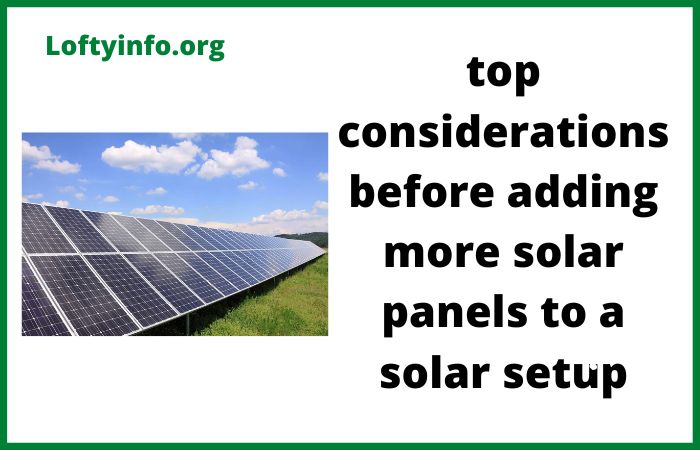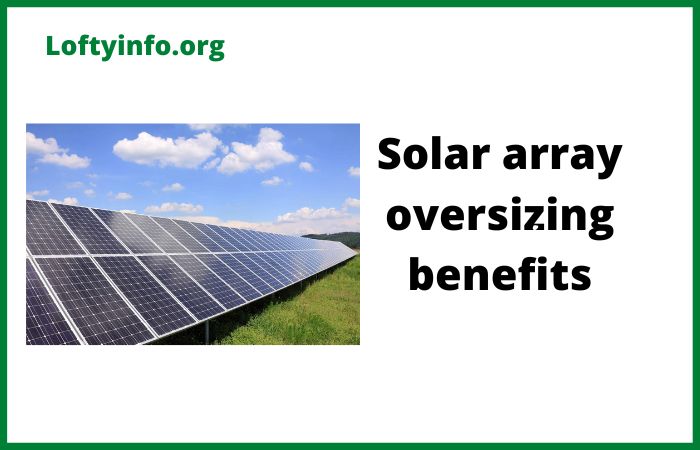Top Considerations Before Adding More Solar Panels to Your Solar Setup
Expanding your solar energy system is an exciting step toward greater energy independence and reduced electricity bills.
Whether you’re looking to power additional appliances, accommodate increased household energy consumption or simply maximize your renewable energy production, adding more panels seems like a straightforward solution.
Before you climb onto your roof or contact an installer, there are several critical factors that demand careful evaluation.
Understanding the top considerations before adding more solar panels to a solar setup can save you from costly mistakes, system inefficiencies, and potential safety hazards.
Top Considerations Before Adding More Solar Panels to Your Solar Setup
1) Assessing Your Current Inverter Capacity
The inverter serves as the heart of your solar power system, converting the direct current (DC) electricity generated by your panels into alternating current (AC) electricity that your home can use.
Before installing additional panels, you must determine whether your existing inverter can handle the increased power output.
Start by checking your inverter’s maximum input voltage and current ratings, which should be listed on the unit itself or in the technical documentation.
Calculate the total voltage and current that your expanded array would produce, accounting for the specifications of both your existing panels and the new ones you plan to add.
If your calculations show that the combined output would exceed your inverter’s capacity, you’ll need to either upgrade to a larger inverter or install a second inverter to handle the additional panels.
Many homeowners overlook this crucial step and discover too late that their inverter becomes the bottleneck in their system, effectively wasting the potential energy production from their new panels.
String inverters, in particular, have fixed capacity limits, while microinverters offer more flexibility since each panel operates independently.
Consider the long-term scalability of your system when making this assessment.
2) Evaluating Your Roof’s Structural Integrity and Available Space
Solar panels are substantial investments that require adequate physical support and positioning.
Each panel typically weighs between 40 to 50 pounds and when you’re adding several more to your existing array, the cumulative weight becomes significant.
Before proceeding with expansion, have a structural engineer or qualified roofing professional assess whether your roof can safely support the additional load.
Beyond weight considerations, examine the available roof space carefully.
Solar panels perform optimally when positioned to receive maximum sunlight exposure throughout the day.
Look for sections of your roof that face south, southeast or southwest in the Northern Hemisphere, as these orientations capture the most solar radiation.
Measure the dimensions of potential installation areas, accounting for necessary spacing between panels for ventilation and maintenance access.
Shading analysis is equally important during this evaluation.
Even partial shading from trees, chimneys or neighboring structures can dramatically reduce panel efficiency.
If your initial installation utilized the prime real estate on your roof, the remaining space might experience more shading during certain times of the day or year, which could diminish the return on investment for your additional panels.
3) Verifying Your Electrical Panel and Wiring Infrastructure
Your home’s electrical panel must be capable of safely managing the increased power input from expanded solar production.
The main consideration here involves the panel’s busbar rating and the size of the solar breaker.
Solar systems feed electricity back into your electrical panel through a dedicated breaker and there are specific
National Electrical Code requirements governing how much solar power can be connected to a panel based on its busbar rating.
Calculate the total amperage of your existing solar breaker plus the amperage needed for your additional panels.
This sum, combined with your main breaker size, cannot exceed 120% of the busbar rating in most residential applications.
If you’re approaching or exceeding these limits, you may need to upgrade your electrical panel entirely which represents a significant additional expense.
Inspect the condition and gauge of your existing wiring.
The wire connecting your panels to your inverter and electrical panel must be appropriately sized to safely carry the increased current without overheating.
Undersized wiring creates fire hazards and reduces system efficiency through resistive losses.
If your original installation used wiring sized specifically for your initial array, you’ll likely need to upgrade to heavier gauge wire for the expanded system.
4) Understanding Your Battery Storage Capacity
For solar setups that include battery storage, expanding your panel array without considering your battery bank capacity is a common oversight.
Additional panels will generate more electricity but if your batteries cannot store this surplus energy, you’re either losing potential energy or sending it back to the grid at potentially unfavorable rates.
Analyze your battery system’s charging capacity, measured in kilowatts and its total storage capacity, measured in kilowatt-hours.
Your battery charge controller must be able to manage the increased input from additional panels.
If your current charge controller is already operating near its maximum capacity, you’ll need to upgrade to a larger unit or install an additional controller in parallel.
Consider your actual energy consumption patterns as well.
If you’re consistently filling your battery bank to capacity with your existing panels and still have excess energy going to waste then adding more panels without increasing battery storage makes little sense.
If you’re rarely reaching full battery capacity, your existing storage might accommodate the additional panel output without modification.
5) Checking Local Regulations, Permits, and Utility Policies
The regulatory landscape for solar installations varies dramatically by location and what was permissible when you installed your original system may have changed.
Before purchasing additional panels, research your local building codes and permitting requirements for solar system modifications.
Many jurisdictions require new permits for system expansions, even if you’re working with the same installer as your original installation.
Contact your utility company to understand their interconnection policies and any potential changes to your net metering agreement.
Some utilities impose size limits on residential solar systems and exceeding these thresholds could affect your compensation rates for excess energy or even disqualify you from certain programs.
Verify whether your utility requires engineering approval or inspection for system modifications.
Homeowners associations and historic district regulations may also impose restrictions on solar panel visibility and placement.
What was approved for your initial installation might not extend automatically to expansions, particularly if the new panels would be visible from the street or alter the appearance of your property.
6) Evaluating System Compatibility and Component Matching
Solar technology evolves rapidly, and the panels available today may differ significantly from those you installed years ago.
When considering the top considerations before adding more solar panels to a solar setup, component compatibility often proves more complex than homeowners anticipate.
Mixing panels with different voltage, current or wattage ratings within the same string can create performance issues.
In a series-connected string, the entire array operates at the level of the weakest or most shaded panel, a phenomenon called the “Christmas light effect.”
If your new panels have higher voltage or current ratings than your existing ones, the older panels may limit the overall system performance.
Temperature coefficients which describe how panels perform in heat also vary between models and manufacturers.
Pairing panels with significantly different temperature coefficients can lead to unpredictable performance variations as weather conditions change throughout the day and across seasons.
Ideally, you would add panels identical to your existing ones but if your original panels are discontinued, work with your installer to find models with similar electrical characteristics.
In some cases, it may be more cost-effective to replace your entire array with current technology rather than attempting to match obsolete components.
7) Conducting a Cost-Benefit Analysis
Finally, evaluate whether expanding your system makes financial sense given current market conditions and your specific circumstances.
Solar panel prices have decreased substantially over the past decade but installation labor and permitting costs remain significant.
Calculate your expected return on investment by comparing the cost of expansion against your projected energy savings.
Consider current electricity rates in your area and how they’re trending.
If rates are low or if you’re already generating sufficient power to cover most of your consumption, the payback period for additional panels might be disappointingly long.
Factor in available tax credits, rebates and financing options, as these can dramatically improve the economics of your expansion.
Also account for the age of your existing system.
If your current panels are approaching the end of their 25 to 30 year lifespan, investing in additions to an aging system may not be as prudent as planning for a complete system replacement in the near future.
Making the Final Decision
Expanding your solar array represents a substantial commitment of resources and the considerations outlined above demand thorough investigation before proceeding.
Take time to document your current system specifications, consult with qualified solar professionals and obtain multiple quotes for the work involved.
A well-planned expansion will serve you reliably for decades while a hasty decision based on incomplete information can lead to frustration and unexpected expenses.
By systematically troubleshooting each of these critical factors, you’ll be well-positioned to make an informed decision that aligns with your energy goals and budget constraints.






